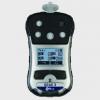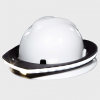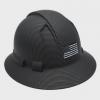Pelican Flashlights Safety Approvals.
Products must pass a battery of rigorous tests conducted by safety agencies before getting a stamp of approval. When you're in a potentially hazardous environment, using a flashlight that carries these approvals is vital.
We feel that designing a flashlight that's safe to use in volatile situations should not be a feature. It's fundamental. That's why Pelican lighting tools are the most safety approved flashlights on the market.
Innovations like our battery polarity tray makes operating a flashlight impossible if one or more cells are inverted. This also safeguards against dangerous "outgassing" of hydrogen from an accidentally reversed cell. Another industry first is the addition of gas-absorbing pellets to our lamp modules. It is a back-up system that absorbs excess hydrogen retained inside the flashlight. No gas, no spark.
| HAZARDOUS AREA ELECTRICAL GUIDELINES | ||||
| SUBSTANCE |
TYPICAL ENVIRONMENTS
|
CLASSIFICATION | VOLATILITY | |
| CLASS 1 | Flammable Gases, Vapors or Liquids (Acetylene, Hydrogen, Ethylene, Propane) |
– Oil Refinery – |
Division 1 |
MOST LEAST |
| Division 2 (Hazard Not Likely) |
||||
| CLASS 2 | Combustible Dusts (Metals [Div.1 only], Coal, Grain) |
– Coal Mine – – Grain Silo – – Munitions Factory – – Hay Storage Facility – |
Division 1 (Hazard Likely) |
|
| Division 2 (Hazard Not Likely) |
||||
| CLASS 3 | Ignitable Fibers & Flyings (Machined Magnesium) |
– Paper Mill – – Woodworking Facility – – Textile Mill – – Cotton Gin – |
Division | |
Division 1: Where volatile substances can exist all of the time or some of the time under normal operating conditions.
Division 2: Where volatile substances are not likely to exist under normal operating conditions.




